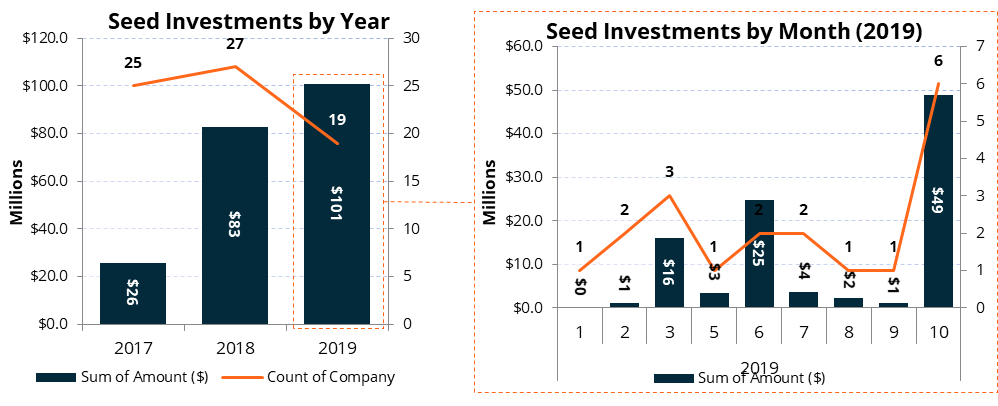Digitizing Traffic Management for Smart Cities – From Moving Vehicles to Moving People
From electric scooters and bikes to ride-hailing and car-sharing, the way humans move around cities is markedly different than it was 100 years ago. Over the next decade, the proliferation of connected, autonomous, shared and electric (CASE) vehicles will usher in a new era of mobility and further change the way we move people and goods. However, transportation infrastructure and management systems have been slow to adapt, creating a bottleneck in mobility innovation.
Every city has a traffic policy regarding how vehicles and actors (pedestrians, cyclists, etc.) are organized and prioritized, and use traffic lights to implement the policy. Current traffic management systems operate traffic lights on fixed time frames and in-road sensors to extend or shorten green lights when needed. This system was created in an era dominated by passenger vehicles and designed to move as many vehicles, not necessarily people, as possible.
By 2030, 1 billion more people are expected to live in cities. Today, 55% of the world’s population lives in urban areas and this percentage is expected to rise to 68% by 2050. Additionally, freight volumes are expected to grow by 40% during this time period. Uncoordinated deployment of new mobility services has overwhelmed aging infrastructure which was designed only for private vehicles and public transit. Although CASE mobility promises to provide a transportation system which is safe, efficient and emissions-free, the path to get there is currently unclear and will require simultaneous innovation in infrastructure and management.
Today, 55% of the world’s population lives in urban areas and this percentage is expected to rise to 68% by 2050.
Next gen mobility will require next gen infrastructure and management
Digitization and advancements in enabling technologies, including artificial intelligence, IoT sensors, computer vision and computing technology has allowed for the development of new traffic management tools for cities. Traditional in-road sensors at traffic lights collect limited data on traffic (mainly, the presence of a vehicle) and can only be used to shorten or extend green lights. This system operates on fixed time frames and can’t adapt to dynamic traffic demand. IoT sensors and machine learning technology in cameras deployed at intersections collect granular data on vehicle, pedestrian and cyclist movement and traffic volume at intersections. This data can then be used for multiple applications:
- Remote monitoring and real-time traffic flow data.
- Building complex models of a city’s transportation system to help city planner’s make informed, data-driven decisions for infrastructure development and investment.
- Leverage AI and cloud computing to adjust traffic light patterns dynamically and in real time.
- Provide the building blocks for connected vehicles and intelligent traffic systems (ITS).
In recent years, early stage startups leveraging these technology advances designed to create value for cities have received significant investment. Since 2017, urban mobility and mobility service startups have received over $44 billion in venture funding across 380 deals, while seed investments have increased from $26 million in 2017 to $101 million in 2019, nearly half of which occurred in October 2019 alone. In addition, automotive OEMs are developing mobility services and solutions for cities to establish their place in the new service-based value chain of the next generation of mobility, where mobility services may overtake vehicle ownership.

For cities, it’s time to adapt
The value of digitized traffic management will accelerate in coming years as cities become more and more overwhelmed by increasing populations and new mobility services. In fact, some measures, such as the Future Mobility Competitive Index (FMCI), have identified a city’s ability to adapt to the mobility revolution and integrate disruptive technology into legacy traffic systems as a critical factor for future economic growth. In addition, emissions reductions targets for 2030-2050 will require a large scale shift to low-emissions and intelligent forms of transportation over the next 5 years.
Traffic systems will need to move more people, not just vehicles, and accommodate dynamic demand. Cities are becoming more proactive in leveraging technology advancements to manage mobility solutions, working with startups and automotive OEMs to digitize urban transport systems. Ford recently announced expansion of its City Insights platform to Austin, Indianapolis, Detroit, Miami, Pittsburg and Grand Rapids after the successful completion of a pilot project in Ann Arbor. Columbus, OH has developed a Smart Columbus Operating System to collect and transmit data related to Smart Columbus projects and to serve as an open data platform. Singapore recently announced plans to develop a next-generation Electronic Road Pricing (ERP) system that will leverage advanced technology to provide more flexibility in traffic management.
From data analytics to command and control
Innovators are developing sensors and proprietary AI algorithms to gather traffic flow, traffic light and mobility service data and provide insights to city planners. Some automotive OEMs and mobility service providers are also building out their own data collection and analysis platforms as new business arms to provide insights for cities. In the near term, and as companies expand deployment of sensors and data analysis capacity, the main value proposition for cities will be providing low-cost data to influence decision making and, in turn, develop more efficient traffic patterns and systems.
Traffic data analytics
Numina, a Brooklyn-based startup founded in 2014, provides a purpose-built sensor to gather street-level flow data, conducts spatial analytics and provide insights on the data collected. City planners then use that information to redesign infrastructure to better accommodate pedestrians and cyclists. Streetlight Data, founded in 2011 and based in San Francisco, collects geospatial data from smart phones and connected vehicles and then processes the data to calculate traffic patterns. The patterns are augmented with transit, mobility service and IoT data provided by cities to improve accuracy.
Ford’s City Insights platform is a suite of software tools to help cities develop traffic solutions. The platform gathers parking, transit, traffic, safety and census data to develop a computer model of a city, gain insights into accidents, parking, commutes, transit efficiency and coverage and livability and predict the impact of policies and pricing on transportation patterns.
In January 2018, Didi Chuxing launched Smart Transportation, leveraging access to anonymized route data from its own mobility services and big data and artificial intelligence capabilities to develop an integrated solution for smart traffic management. The solution includes a big data platform that displays real-time traffic conditions, congestion and safety analysis, reversible lanes, smart traffic signals, traffic information for drivers and bus dispatching. pop
Mobility service analytics
Populus Technologies, founded in 2017 and based in San Francisco, offers a mobility service analytics platform on a subscription basis, through which Populus receives and hosts usage and operation data from mobility service operators. The company offers mobility services analytics to both cities and mobility service operators, helping cities utilize mobility data and incentivizing data sharing.
Wunder Mobility, a growth stage startup based out of Germany that recently expanded to the United States, offers its own carpooling app and powers third-part apps via a white-labeled service. The company is leveraging this access to mobility service operators to develop Wunder City, a tool that helps cities evaluate, plan and regulate mobility operators. The service develops reports from mobility services to assist in planning and strategy around mobility services.
Ride Report, founded in 2015 and based in Portland, offers a ‘mobility data specification (MDS) auditing service’ that helps cities measure performance and rate compliance of mobility operators. The service reduces staff time and increases revenue by scaling the number of trips offered by mobility operators.
Traffic system command and control
NoTraffic, a startup founded in 2016 with operations in Tel Aviv and the United States, has developed a solution involving AI-enabled plug-and-play sensors, edge computing embedded in the sensors to process the data within the IoT device, and communication models using V2X communication to send data to the cloud for further processing. The system then optimizes traffic lights in real-time by sharing data through the cloud to and between intersections. NoTraffic has a unique offering in that the system operates completely autonomously – from data collection to traffic light operation.
The broader market
Relationships with cities will be a key differentiator for players in the traffic management space. Automotive OEMs can build upon existing relationships to develop and deploy traffic management solutions. However, startups can leverage innovative capabilities to develop novel, lower-cost solutions. Low cost and ease of deployment will allow companies to provide a strong business case for cities and scale their technology rapidly. More sensors deployed means a higher volume of data and, in turn, better insights. However, large amounts of data will strain cloud computing capabilities. Innovative solutions, such as edge computing in sensors and quantum computing can offer increased computing capacity and scalability.
Look out for…
- Shifting value proposition from providing data to advanced analytics and autonomous command and control capabilities. As more cities require mobility service providers to share operating data and sensors become ubiquitous, the real value will lie in what is done with the data, rather than just access to data.
- Innovation in sensor and computing capabilities for more accurate and less expensive data collection and faster, more accurate processing at scale.
Looking for more insight into the future of urban mobility? Join us for Cleantech Forum San Francisco on 27-29 January. Our session, Urban Mobility: Lessons Learned and Future Innovative Solutions, will introduce you to thought leaders, start-ups and investors looking for solutions to a complex and increasingly important problem.


